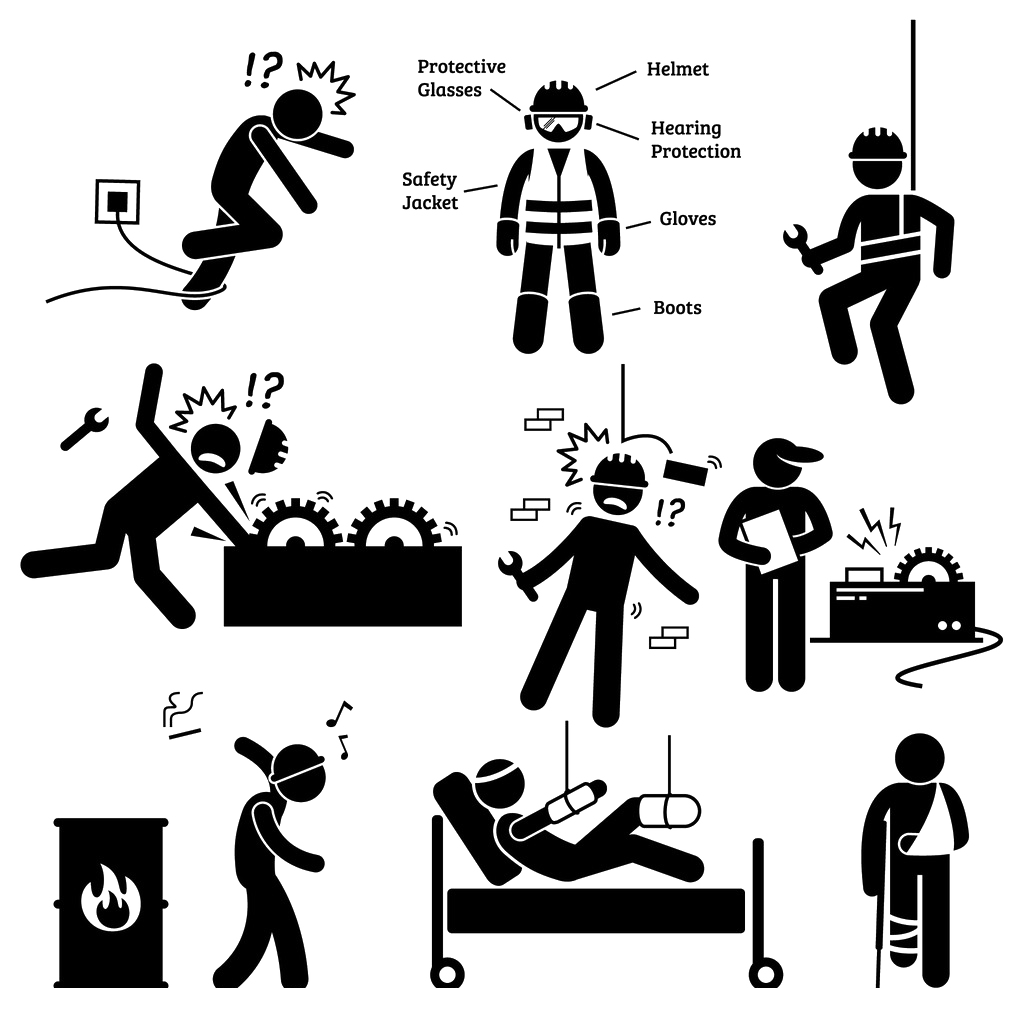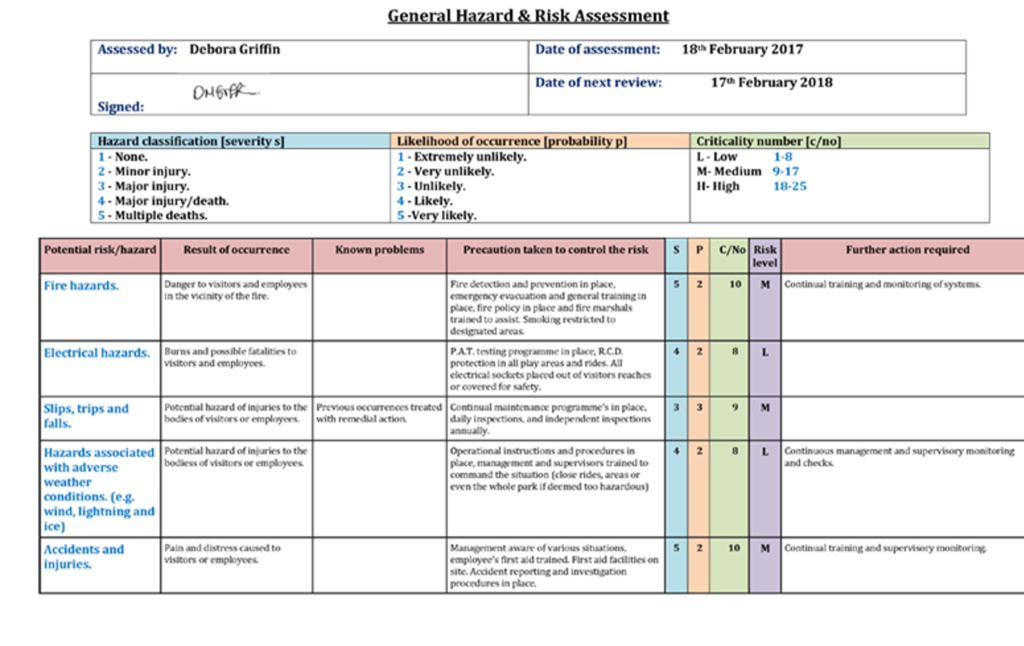Decreasing the Risk of Injuries in the Workplace: Strategies, Statistics, and Best Practices
7 min readEnsuring the safety and well-being of employees is a top priority for any organization. Workplace injuries not only harm individuals but also have a negative impact on productivity, morale, and financial stability. It is crucial for employers to implement strategies and best practices to decrease the risk of injuries in the workplace. In this article, we will explore effective strategies, relevant statistics, and best practices that can help create a safer work environment.
Also Read: Guideline for Process Safety Management Program with Free Training

The Importance of Workplace Safety
The impact of workplace injuries on individuals and organizations
Workplace injuries can have significant impacts on both individuals and organizations. Let’s explore these impacts separately:
Impact on Individuals:

- Physical Consequences: Workplace injuries can result in physical harm, ranging from minor cuts and bruises to severe injuries such as fractures, burns, or even permanent disabilities. These injuries can cause pain, discomfort, and limitations in performing daily activities.
- Emotional and Psychological Effects: In addition to physical pain, workplace injuries can have emotional and psychological consequences. The injured individuals may experience stress, anxiety, depression, or post-traumatic stress disorder (PTSD) due to the trauma of the injury and the impact it has on their lives.
- Financial Burden: Workplace injuries can lead to financial difficulties for individuals. Medical expenses, rehabilitation costs, and lost wages during recovery can create financial strain. In severe cases, long-term disabilities may affect an individual’s earning potential and quality of life.
- Reduced Quality of Life: Workplace injuries can significantly impact an individual’s overall quality of life. Physical limitations, chronic pain, and disabilities can restrict their ability to engage in activities they once enjoyed, affecting their social life, hobbies, and relationships.
Impact on Organizations:
- Decreased Productivity: Workplace injuries can disrupt workflow and reduce productivity. When an employee is injured, their absence or reduced capacity to work can lead to delays in projects, increased workloads for other employees, and decreased overall efficiency.
- Increased Costs: Workplace injuries result in direct and indirect costs for organizations. Direct costs include medical expenses, workers’ compensation claims, and potential legal fees. Indirect costs may include hiring and training replacement workers, lost productivity, damage to equipment or property, and increased insurance premiums.
- Damage to Reputation: Organizations that have a poor safety record or are perceived as not prioritizing employee well-being may face reputational damage. This can impact their ability to attract and retain talent, win contracts, and maintain positive relationships with stakeholders.
- Legal and Regulatory Consequences: Workplace injuries can lead to legal and regulatory consequences for organizations. Failure to comply with safety regulations or negligence in providing a safe work environment can result in fines, penalties, lawsuits, and damage to the organization’s reputation.
To mitigate the impact of workplace injuries, organizations should prioritize occupational health and safety, implement preventive measures, provide proper training, and promote a culture of safety. Timely reporting, investigation, and addressing the root causes of incidents can help create a safer work environment and protect both individuals and organizations from the negative consequences of workplace injuries.
Also Read: Regular Safety Meetings 6 Ways Keep Employees Safe and Decrease Incidents
Legal obligations and regulatory requirements
Employers have a legal and ethical responsibility to provide a safe working environment for their employees. Failure to meet safety standards can result in legal consequences, fines, and penalties. Additionally, regulatory bodies, such as the Occupational Safety and Health Administration (OSHA) in the United States, enforce safety regulations and conduct inspections to ensure compliance.
Strategies for Decreasing the Risk of Injuries
To decrease the risk of injuries in the workplace, organizations can implement various strategies and practices. Here are some effective strategies:

- Safety Training and Education: Provide comprehensive training programs to employees, focusing on the proper use of equipment, safe work practices, and hazard identification. Regularly educate employees about potential risks and preventive measures to raise awareness and promote a safety-conscious culture.
- Hazard Assessments and Risk Management: Conduct regular hazard assessments to identify potential risks and implement appropriate control measures. This may involve evaluating work processes, equipment, and the physical environment to identify and mitigate hazards effectively.( Read: E-Books: Risk Assessment A Practical Guide to Assessing Operational Risks )
- Safety Policies and Procedures: Establish clear and well-communicated safety policies and procedures that address specific risks and outline safe work practices. Ensure that employees understand and follow these guidelines consistently.
- Personal Protective Equipment (PPE): Provide appropriate personal protective equipment, such as helmets, gloves, safety goggles, and hearing protection, based on the specific hazards present in the workplace. Train employees on the correct usage, maintenance, and limitations of PPE.( Also Read: Designing an Effective PPE Program 5 Tips )
- Ergonomics and Workstation Design: Consider ergonomic principles when designing workstations and selecting equipment. Promote proper posture, provide adjustable furniture, and encourage regular breaks to prevent musculoskeletal injuries and promote overall well-being.
- Maintenance and Inspections: Regularly inspect and maintain equipment, machinery, and infrastructure to ensure they are in safe working condition. Implement preventive maintenance schedules and promptly address any identified issues or defects.
- Reporting and Investigation: Establish a reporting system for incidents, near-misses, and hazards. Encourage employees to report incidents without fear of reprisal. Investigate all reported incidents to identify root causes and implement corrective actions to prevent future occurrences.
- Employee Involvement and Engagement: Involve employees in safety committees, encourage their active participation in safety initiatives, and seek their input on identifying hazards and improving safety practices. Engaged employees are more likely to follow safety protocols and contribute to a safer work environment.
- Continuous Improvement and Training: Regularly review and evaluate safety performance. Analyze incident data, identify trends, and implement corrective measures to continually improve safety practices. Provide ongoing training and refresher courses to reinforce safe behaviors and promote a safety culture.
- Leadership Commitment: Strong leadership commitment is crucial for creating a safe work environment. Leaders should demonstrate a genuine commitment to safety, allocate resources for safety initiatives, and actively participate in safety programs. Their commitment and visible involvement set the tone and motivate employees to prioritize safety.(Read more: Prevent the risk of injury due to hand-arm vibration )
By implementing these strategies and fostering a culture of safety, organizations can significantly reduce the risk of workplace injuries and create a safer and healthier work environment for their employees.
Workplace Injury Statistics
Understanding workplace injury statistics can provide valuable insights into the prevalence of injuries and the industries most affected. Workplace injury statistics can vary by country, industry, and other factors. However, here are some key statistics from the past that highlight the significance of workplace injuries:

- Global Statistics:
- According to the International Labour Organization (ILO), an estimated 2.78 million workers die each year due to work-related accidents and diseases.
- The ILO also reported approximately 374 million non-fatal work-related injuries and illnesses annually.
- United States:
- The U.S. Bureau of Labor Statistics (BLS) reported that there were approximately 2.9 million non-fatal workplace injuries and illnesses in 2019.
- The BLS also reported that there were 5,333 fatal work injuries in the U.S. in 2019.
- European Union:
- Eurostat, the statistical office of the European Union, reported that there were around 2.5 million non-fatal workplace accidents in the EU-27 countries in 2018.
- Eurostat also reported that there were 3,169 fatal workplace accidents in the EU-27 countries in 2018.
- Construction Industry:
- The construction industry is known to have a higher risk of workplace injuries. In the United States, the Occupational Safety and Health Administration (OSHA) reported that 20.7% of all private industry worker fatalities in 2019 were in the construction sector.
Also Read: Overview of Lost Time Incident Rate and its Calculator
Best Practices for Workplace Safety
Regular safety inspections and maintenance
Employers should conduct regular safety inspections to identify potential hazards and ensure that safety measures are in place. This includes inspecting equipment, machinery, electrical systems, and the overall work environment. Any identified issues should be promptly addressed and corrected.
Establishing clear safety policies and procedures
Clear and well-communicated safety policies and procedures are essential for promoting a safe work environment. Employers should document safety protocols, emergency procedures, and reporting mechanisms for hazards and incidents. These policies should be easily accessible to all employees and regularly reviewed and updated as needed.
Providing adequate staffing and resources
Insufficient staffing levels and resources can increase the risk of workplace injuries. Employers should ensure that there are enough employees to safely perform tasks and provide the necessary tools, equipment, and training to carry out job responsibilities safely.
Regularly reviewing and updating safety protocols
Workplace hazards and best practices evolve over time. Employers should regularly review and update their safety protocols to align with industry standards and emerging risks. This can involve conducting periodic risk assessments, seeking employee feedback, and staying informed about changes in safety regulations.
Encouraging employee involvement and feedback
Employees are a valuable resource in identifying and addressing workplace hazards. Employers should actively encourage employees to report potential hazards, near-miss incidents, and safety concerns. Regular communication channels, such as safety committees or suggestion boxes, can be established to facilitate employee involvement. Employers should also provide feedback and take prompt action to address employee concerns.
Also Read: HSE Incentive and Rewards
Conclusion
Decreasing the risk of injuries in the workplace is of paramount importance for both employees and organizations. By implementing effective strategies, providing proper training, and fostering a culture of safety, employers can create a safer work environment and mitigate the negative consequences of workplace injuries. Regular risk assessments, safety training programs, and the use of engineering controls and personal protective equipment are essential components of a comprehensive workplace safety program. By prioritizing workplace safety, employers can protect their employees, improve productivity, and promote a positive work environment.
Read Also: Photo of the day: Outline Safety observations
For more safety Resources Please Visit Safetybagresources



